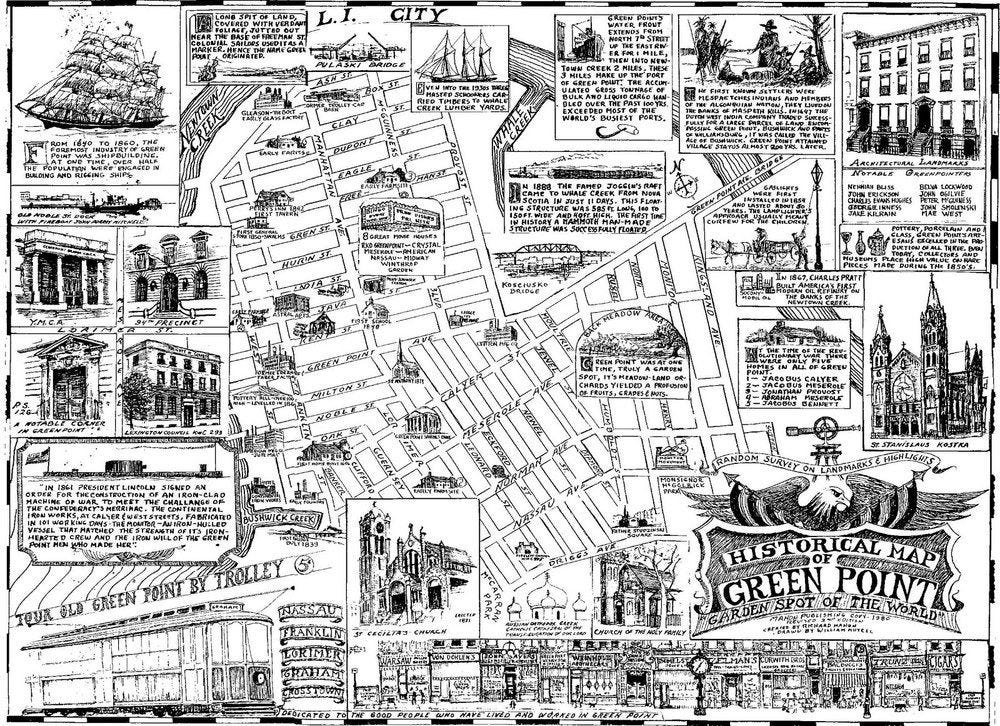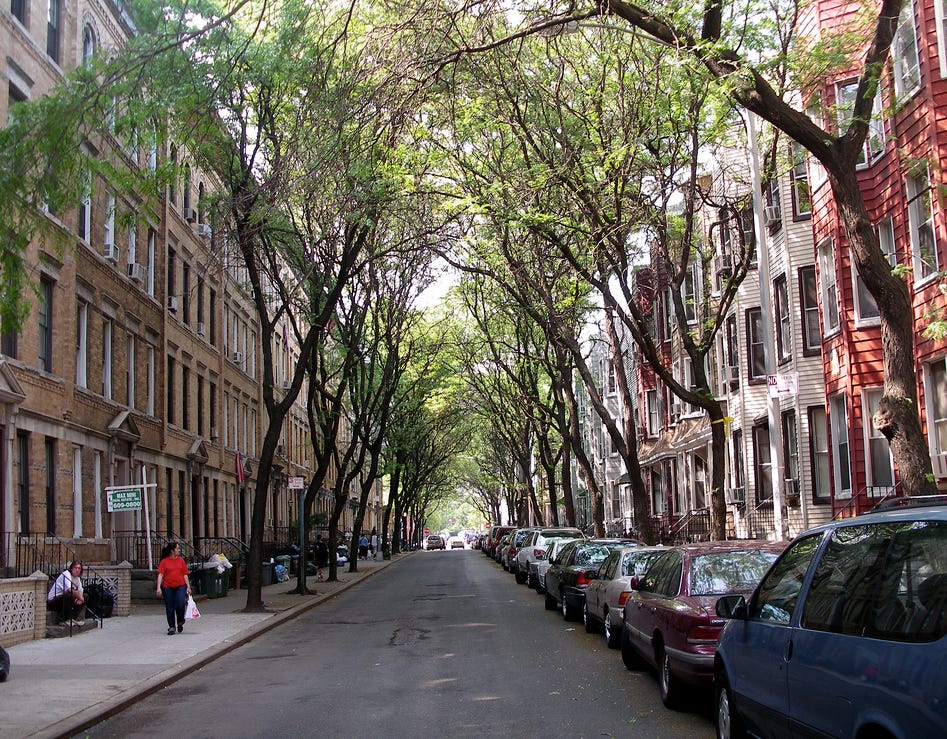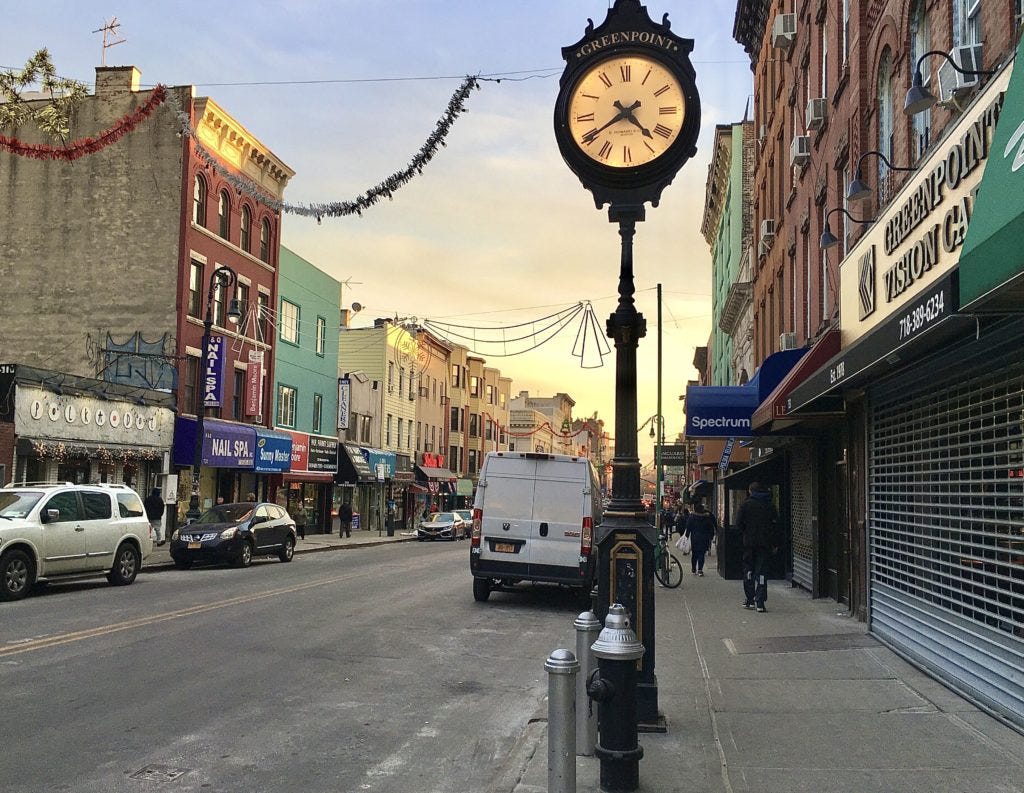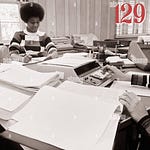Hi! Quick housekeeping: I’m exploring a potential bonus item that would justify introducing a paid tier to 129. I love this project but it adds up! Literally! To be clear, the list items (ex: what you’re reading now) will always be free, but if people are interested, there may be an extra something special for paid subscribers. I’d love your input — please fill out the Google form here!
Now back to our regularly scheduled programming. Thank you! xx
#20. “Change Apartments from Time to Time.”
At the beginning of August, I received a very disturbing email. The subject line read: LEASE RENEWAL OFFER. For months, I’d been waiting for this moment with a sense of impending doom, certain whatever was inside would not be good. And I was right.
I am going to have to move.
Moving sucks no matter when, why, or how you do it. It’s exhausting and stressful and destabilizing and expensive. But for me, staring down the barrel of my sixth apartment in three years, moving now feels like a cruel twist in a Greek epic—a never-ending Odyssey in which the ship never seems to reach land.
As I wallowed in StreetEasy-induced self-pity, it dawned on me that for years, I’ve inadvertently and unwittingly been carrying out #20 on my list: “Change Apartments from Time to Time.” I’ve become a revolving door of addresses, a transient nester desperate for a place to put down roots. How very Frances Ha of me.
Since moving to New York in September 2021, I’ve resided in a questionable living room on the Upper West Side, a glamorous walk-up on the Lower East, and a boho-bougie bedroom in Alphabet City. Each sublet came with different roommates, roaches, and ramifications. It was the good, the bad, and the ugly of Manhattan renting, and by the end of my first year in the city, I knew I’d experienced enough to know the following: I was meant to be in Brooklyn.
In October 2022, I relocated to Greenpoint, a tiny slice of Brooklyn tucked into the borough’s northernmost corner along the East River.
Originally inhabited by the Keskachauge tribe and then stolen and settled on by the Dutch West India Company, for centuries, Greenpoint — like most of New York — consisted of lush green farmland, slowly stripped down to build a city. By the late 1800s, the neighborhood was established as a manufacturing haven, home to shipyards, brass and iron foundries, glasswork factories, sugar refineries, and breweries. In the mid-20th century, Greenpoint was recognized as having the largest pencil producer in the country (Eberhard Faber Pencil Company) and what was, at the time, the most significant oil spill in United States history (1950 Greenpoint oil spill). Throughout most of the 1900s and early 2000s, it remained a working-class, immigrant neighborhood with vibrant Polish and Italian communities.
In the mid-2010s, the area became synonymous with HBO’s Girls. The show’s protagonist, Hannah Horvath (played by Lena Dunham), housed a revolving door of roommates at her now famous India Street apartment. They congregated (and worked) at the Cafe Grumpy around the corner, biked down McGuinness to Bushwick, and experienced the full range of human emotions from Hannah’s iconic front stoop.
Girls may not have been what put Greenpoint on the map as a desirable place to live, but its rise coincided with a radical transformation of the neighborhood. In 2005, a rezoning of the East River waterfront paved the way for luxury residential buildings and ample green space. Over the next decade, decaying industrial warehouses became swanky hotels and restaurants, and junkyards were cleared for high-rise housing. The old pencil factory — shut down in 1956 — now sits across from a bar aptly named The Pencil Factory; in place of glasswork factories are expensive glassware stores; and, well, the oil from the spill stuck around, allegedly still seeping into the area’s groundwater today.
By the time I arrived to the party in 2022, Greenpoint was no longer a niche neighborhood but rather an address that elicited an “Oh, I wish I could live there” from almost anyone you talked to. Even in the two years since I have called it home, the area’s history and identity seem to be in constant evolution. Every month, more local institutions shutter under the pressure of increasingly high rent. In their place pops up trendy ice cream shops, Michelin-star restaurants, satire-worthy natural wine bars, and, in late July… a Sweetgreen. This one was especially disheartening; until recently, I prided myself on living in a neighborhood where the only basic lunch bowl-type restaurant was Eden’s, a salad pop-up operating out of a dive bar on Franklin Street.
Something about the Sweetgreen felt like a nail in a slowly closing coffin; commercial and sterile, it represents everything the neighborhood is not. Greenpoint is weird and quaint. It boasts more pierogies than people, it’s only accessible by a train that seldom runs on time, it’s got townies, it has a “cat gang,” for crying out loud! The Oak Street Cat Gang consists of three semi-feral cats living outside a duplex on Oak Street, a few houses down from the 1887-era Greenpoint Home for the Aged, a charity ward built for single and widowed women of the time.
Greenpoint has a soul. Of course I suppose this is true for most of New York City and its surrounding boroughs — perhaps that’s why we love it here so much, the literal and figurative character baked into these storied streets. But there’s something about my specific neighborhood that feels magical, like I’ve stumbled into the Hogwarts Room of Requirement. It’s fleeting and arcane and all too good to last.
Since moving to Greenpoint, I’ve lived in two apartments: one on Guernsey Street and my current place on Meserole Avenue. The Guernsey Street apartment is a story for another essay (or my therapist) (or both). It was a difficult home during a difficult time, and the only thing that made living in it easier was a love of the neighborhood.
On the other hand, Meserole Ave is a pinch-me-palace, a massive three-bedroom gem that I lucked into last fall via the Instagram story of a theater camp friend.
It was love at first sight. The roommates—two girls my age—are normal, kind, and cool. My bedroom is larger than any space I’ve ever lived in, boasting natural light and a breathtaking view of an old lady’s backyard. It has a dishwasher, air conditioning, roof access, a big comfy couch, and, best of all… a sense of hope. From the moment I walked through the door last September, I had a feeling that things would be different here, that I would be different here. For the first time since moving to New York, after four apartments, seven roommates, hundreds of boxes, and thousands of tears, I finally felt at home.
Naturally, I’ve spent the last eleven months waiting for the other shoe to drop. It was all too good to be true. Things couldn’t be this easy; something had to go wrong. And so when the changes started coming — the Caffe Panna, the million-dollar listings featured on Netflix’s real estate hit Owning Manhattan, the Sweetgreen — I plugged my ears, desperate to silence the canary screeching from the coal mine. But then July 31st became August 1st, and a renewal offer arrived in my inbox. Our rent was raised, and the quarry collapsed in on itself.
Faced with the prospect of yet another move, I experienced something of an identity crisis. Things had just gotten good, the story stable; what if another shake-up made me fall apart again? I felt sickened at the thought of apartment tours and moving boxes and spackling and packing up the person I had finally gotten so comfortable becoming. It was like a break-up, and I was devastated by the dissolution… I really thought this relationship would last.
I felt afraid of the unknown. Who would I be without Meserole Avenue?
So much of life — most of life, maybe — is centered in and around where we live. And if reality is not, television certainly is. Mary Tyler Moore, Friends, New Girl, The Odd Couple, Seinfeld… the apartments are so significant to these stories that they should get series regular rates and producer credit by season two. And so, while pondering my near-constant real estate reinvention, I wondered how much would have changed if these iconic characters had lived in another space.
What would have happened if Jerry Seinfeld had moved to a different Upper West Side block halfway through Season One or if the gang from New Girl had downsized to a slightly less cavernous loft in Silver Lake instead of DTLA? Would Girls still be Girls without Hannah’s India Street apartment? Would Carrie be having as much sex in the city if she’d been priced out of that iconic Upper East Side walkup?
This is not to suggest that the trajectory of our television heroines would have wholly changed had they signed a different lease. Carrie would still be a writer, Jerry a comedian, Hannah a narcissist, Ross a dinosaur lover, and Schmidt, Schmidt.
An apartment doesn’t define who a person is, but it does affect who they become. The neighbors, the neighborhood, the roommates, the rats, the coffee shop on the corner, the subway stop a few blocks away. It’s all color, painting a story between the black-and-white lines of an airtight lease.
It is the place where we cry and eat and work and sleep and fuck and dream and break down and rebuild. It’s four walls and a bunch of furniture, and it somehow manages to hold the weight of an entire existence.
Or… does it? Am I being dramatic, imbuing meaning into the inanimate, letting sentimentality and nostalgia make a book represent far more than just the words on the page? Can’t an object just be an object, and a room just a room? I’m not sure. The more I think about it, the more I am struck by uncertainty about what is more important: people or place.
Are we defined by where we live, or is it a matter of who we are when we live there?
The same interrogation accompanies the adage: “Home is where the heart is.” What is that heart, and where is that home? Is it a physical space or a feeling? Could you live in 15 different places in one year so long as you had the peace to feel happy doing so? Or would the endless moves create a whiplash of person and personality, a mess of reinventing the wheel so many times it becomes unrecognizable and could never be used to operate a motor vehicle?
In Friends, Seinfeld, Mary Tyler Moore, Girls, Sex and the City, New Girl, characters change while protected by a sense of permanence: their apartment. Except for an episode or two for a good story arc, we follow folks who become different while their homes stay the same.
So what happens when neither is static—the person or the place? Does it inspire evolution, or does the constant lack of stability inhibit positive progression?
I am, of course, thinking about myself (okay, narcissist). About my ever-changing, never-constant landing pad. I wonder what it’s done, is doing, and will do to me.
Who have I left behind in the moves? And who have I become in the rebuilding?
I don’t know the answer. But as I sorted through my shit, working to come to terms with reality, I began to see the benefit of embarking on something akin to a series of short-term situationships. Of course each experience has changed me. How could it not? There has been pure joy and fresh hell in these spaces. I’ve walked away from each stronger, smarter, a little bruised, full of stories, unsure of the unknown but ready to face whatever is ahead.
Like dating, finding a new apartment is overwhelming and fraught with possibilities.
Maybe the new place will have a seat on a bay window overlooking a tree-lined street; maybe the new partner will be an amazing cook. Maybe there will be cockroaches; maybe he’ll snore. Maybe the neighbors will be loud and rude; maybe her family will hate you. Maybe you’ll form a close bond with the bodega man; maybe his friends will adopt you as their own. Maybe the neighborhood will suck, maybe he’ll break your heart, maybe the place will be haunted, maybe she’s haunted by her ex, maybe the windows will rattle incessantly from the nearby train and the AC won’t work and it’s not as big and doesn’t feel like home and you don’t laugh like you did and you’re lonely and it’s all foreign and weird and you miss your old nail place and coffee shop and running route. Maybe it will just feel like more relentless change, another disappointment of putting your heart into yet another thing that will not last.
Maybe it’ll be a disaster.
But maybe the move was necessary, the shake-up essential. Maybe once the boxes are broken down, the paintings are mounted, the mugs organized, the books shelved, the clothing hung snugly on the velvet hangers in the closet, maybe then you’ll realize you quite like where you’ve ended up. Maybe once you give something — or someone — new a chance, you’ll find it’s better than you could have ever imagined.
Or maybe it sucks, and in twelve months, you pack up and do it all over again.














